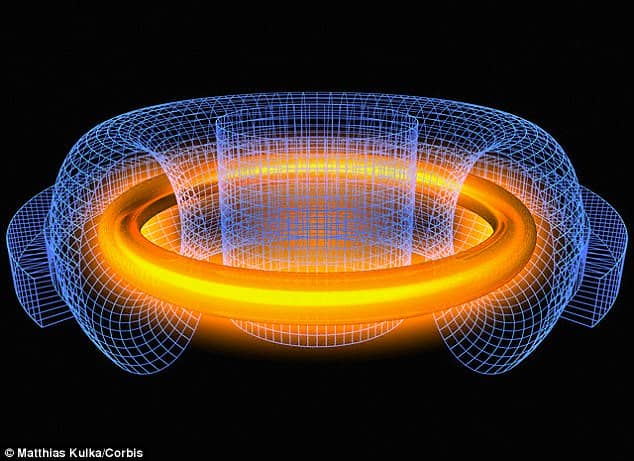Remember Lockheed Martin’s claim that they’ll build a nuclear fusion reactor small enough to fit on the back of a truck? Many hailed the idea as revolutionary and called it a device that could ‘solve the world’s energy crisis.’
Lockheed Unveils The Plan To Build A Self-Sustaining, Truck-Sized Fusion Reactor
But some critics did point out the claim’s non-practicality and how it could never materialize. Sadly, it seems as the critics were right after all, as an updated technical report shows that Lockheed’s fusion “mini” reactor is about 100 times larger than the original plan, while the target weight of 20 tons has been increased to a massive 2,000 tons.
Dr. Matthew J Moynihan, a ‘Nuclear Fusion Evangelist’ from Houston released the technical specifications of Lockheed’s fusion reactor project, which are nothing to be proud of! The reactor’s size in the report is seven meters in diameter, and 18 meters in length, which is similar to a submarine nuclear fission reactor.
In a blog, Mr. Moynihan wrote:
‘Based on the newest numbers – the CFR is not as compact as we had thought. The core looks to be over 50 feet long and 20 feet in diameter. A hot plasma will sit inside this ~16.3 cubic meter space. That is enough space to fit two yellow school buses, with some extra room.’
Besides trumpeting its unique sizing, Lockheed’s system featured a tube-like design allowing them to overcome the limitation of traditional fusion reactor designs’ plasma capacity. Lockheed’s design successfully constrains the plasma using a compact fusion reactor (CFR) that has specifically shaped magnetic field inside.
This uses the magnetic field to hold plasma whenever it tries to expand and thus uses minimal space to store optimum amounts.
Dr. Joel Gilmore, Principal at Renewable Energy & Climate Policy at Roam Consulting, said:
‘Certainly, I’d welcome fusion as part of the world’s energy mix, but this announcement is a long way from a working prototype, let alone a commercially viable power generator.
Fusion requires incredibly high temperatures and pressures, which is challenging, and a lot of people have been working on fusion for a long time. So I won’t get too excited yet.’
Lockheed speculated that their miniature fusion reactor could be commercialized within five years, and would help in developing new power sources for the world. But the latest specifications show that they are struggling to get even close to their claims.

